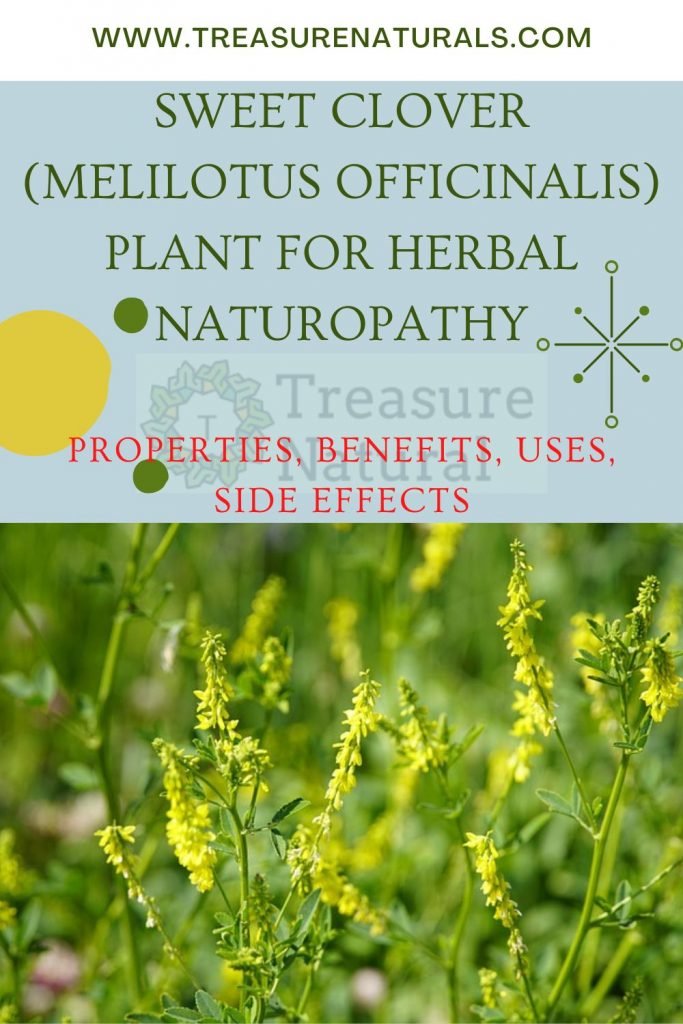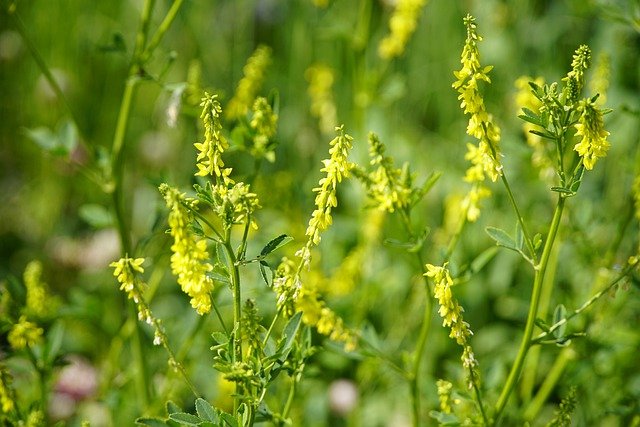
Sweet clover ( Melilotus officinalis ) is a plant of the Leguminosae family useful against cellulite, water retention and circulatory disorders. Let’s find out better.
Properties of the sweet clover
The leaves and flowering tops of the sweet clover contain flavonoids, tannins and coumarin glycosides, which release coumarins by enzymatic hydrolysis. Among these the most represented is melilotoside, which then transforms into coumarin. whose main effect is on lymphatic drainage.
Furthermore, coumarin significantly reduces the demolition of catecholamines, in particular of adrenaline, at the vascular level, with a consequent improvement in the contractile capacity of blood vessels. In fact, catecholamines are among the main vasoconstrictors present in the human body.
Furthermore, the plant carries out a vasoprotective action on the walls of the veins, increasing their permeability, and therefore behaving like aescin. The same field of indication necessarily derives from it, mainly in diseases of the veins and in disorders caused by varicose veins. In this action, flavonoids play a complementary role.
The plant is therefore indicated in the treatment of venous and lymphatic insufficiency, in the presence of edema and swelling of the lower limbs, water retention, varicose veins, phlebitis, heavy legs, hemorrhoids and cellulite.
How to use
INTERNAL USE
INFUSION: 1 tablespoon of sweet clover leaves, 1 cup of water
Pour the sweet clover into the boiling water, turn off the heat, cover and leave to infuse for 10 min. Filter the infusion and drink it, to take advantage of the draining and vasoprotective action.
Mother tincture of sweet clover: 30 – 40 drops in a little water, 2 times a day between meals.
1 or 2 tablets or capsules of dry extract (maximum 500-600 mg per day), 2 times a day between meals.
Contraindications of sweet clover
In some cases the sweet clover can cause nausea, sometimes accompanied by diarrhea, which usually appears only at the beginning of the treatment and then disappears later. It should not be used during pregnancy, lactation and children under 10 years of age.
Description of the plant
Annual and biennial herbaceous plant has one or more erect or prostrate stems, hairless, bearing alternate, trifoliate, oblong leaves with serrated edges. The yellow flowers are collected in axillary spike-shaped racemes. The fruit is a hairless legume, greenish when ripe.
The habitat of the sweet clover
Widespread throughout Europe with a temperate climate, it grows in fields or in uncultivated and semi-sunny places.
Background

The Ancients called the sweet clover Sertula campana, because it grows in abundance in Campania, where it was customary to weave garlands with its stems to place on the head. In popular tradition it was customary to put bands in the closets, to perfume the linen, because it was believed to keep moths away from clothing.






